The famous anti-aircraft gun "Eight-eight"
In 1936-1937, the modernization of this anti-aircraft gun was carried out in Germany, the following notable changes were made already during the Second World War, in 1939-1943. Due to the fact that anti-aircraft guns of various modifications had a high degree of unification among themselves, as a result, the gun, which received an unofficial nickname from its caliber “Acht-acht” (Eight-Eight), got the name 8,8 cm FlaK 18 / 36/37/41. In total for the entire production period, which was discontinued in March 1945, more than 21 thousand guns of all versions were manufactured. This anti-aircraft gun is rightfully considered one of the best guns of World War II, it also served as the basis for creating a tank gun for heavy tank PzKpfw VI "Tiger". These guns were widely used not only as anti-aircraft, but also as anti-tank and even field guns. Often it is the German "eight-eight" that is called the most famous weapon of the Second World War.
Already during the war, the Germans finally understood that the “Eight-eight” was also effective in fighting the enemy’s armored vehicles. The gun perfectly proved itself on the Soviet-German front and in North Africa. At these theaters of war the situation was similar for the Germans - they faced the overwhelming superiority of the Soviet and British troops in the number of tanks, which very often were very well armored. This superiority of the allies was multiplied by the lack of armor penetration of the main German anti-tank weapon - the 3,7 gun cm PaK 35 / 36. At the same time, the disadvantages of the "Eight-eight" also existed: the high cost of production, large mass and high silhouette. All these shortcomings were compensated by the advantages of the instrument. As a result, in many critical situations for the Germans, only the massive use of 88-mm anti-aircraft guns helped to rectify the situation and quickly brought glory to one of the most dangerous artillery systems on the battlefield to this anti-aircraft gun.
Semi-automatic large-caliber anti-aircraft guns (75-105 mm) were developed in Germany during the First World War. But the provisions of the Treaty of Versailles forbade the Germans to possess anti-aircraft artillery, and all the guns of the Reichswehr were destroyed. Again, the Germans engaged in their development secretly in the second half of the 1920-s, the work was carried out by German designers both in Germany and in Sweden, Holland and other countries. At the same time, all new anti-aircraft guns and field guns, which were designed in Germany in those years, received the number 18 (that is, the model 1918 of the year) in designation. In the case of requests from the governments of France or Great Britain, the Germans could always answer that these were not new tools, but old designs that were created during the war. Also for the purpose of conspiracy up to 1935, the anti-aircraft units were called "mobile battalions" (Fahrabteilung).
By 1928, the designers prepared several anti-aircraft guns of a caliber of 75 mm with a barrel length of 52-55 calibers and 88 mm with a barrel of 56 caliber length. In 1930, anticipating the development of high-altitude bomber aviation, German designers and generals decided to increase the caliber of his proposed 75-mm anti-aircraft gun m / 29, which was a joint development of the companies "Bofors" and "Krupp". At the same time, the 105-mm unitary shot was heavy enough for field conditions, the loader could not provide a high rate of fire. For this reason, the choice was stopped on an intermediate caliber - 88 mm. Since 1932, the Krupp factory in Essen began mass production of 88-mm anti-aircraft guns, dubbed 8,8 cm Flak 18.
The barrel of the gun consisted of a casing, a free pipe and a breech. A fairly high rate of fire, which reached the 15-20 rounds per minute, provided a semi-automatic horizontal-wedge type shutter. He provided for the extraction of spent cartridges and cocking the combat spring at the expense of recoil energy. To return the anti-aircraft gun to its original position, a pneumatic knurled rod was used, located above the barrel. Under the barrel of the gun in two special cylinders a spring balancing mechanism of a pulling type was mounted, which facilitated the vertical guidance of the gun to the target.
Anti-recoil devices anti-aircraft gun consisted of a hydraulic brake recoil spun type, as well as hydropneumatic knurling. The length of the recoil tool was variable. The base of the gun carriage was a crosspiece, in which the main longitudinal beam served as a wagon, and when the anti-aircraft gun was moved to the stowed position, the lateral beds went up. The base of the swivel mount was mounted to the base of the anti-aircraft gun carriage. Rotary and lifting devices had two speeds of targeting. The anti-aircraft gun was transported with the help of two moves (uniaxial trolley carts) Sd.Anh.201, which were disconnected when transferring the anti-aircraft guns from marching to combat position. The moves were non-interchangeable: front - with single wheels, rear - with dual wheels.
Already in 1936, a new, modernized Eight-Eight began to come into service, receiving the Flak 36 index. The changes made mainly affected the construction of the gun barrel, which received a detachable front part, which facilitated the process of its production. In this case, the ballistics and the internal structure remained the same as those of the Flak 18. Also, as part of the modernization, all brass parts were replaced with steel ones, which made it possible to reduce the cost of the tool. Modernized and carriage - front and rear beds have become interchangeable. For towing began to use new moves Sd.Anh.202 with dual wheels, which were now the same. Other minor changes were made, but structurally both instruments were identical.
A year later, a new modification was developed - Flak 37. This anti-aircraft gun was distinguished by an improved system of indication of the direction of shooting, which was connected by cable with a fire control device. At the same time, the FlaK / 36 / 37 anti-aircraft guns used Sonderanhänger 202 trolleys, which had a higher payload and a higher transport speed. But their main advantage was the ability to fire at ground targets "from the wheels", that is, directly from the carts. The fire from the marching position was carried out as follows: only the side stops of the cruciform stand of the gun were lowered to the ground, the anti-aircraft gun was leveled and stabilized with the help of steel piles, which the calculation hammered into the ground through the holes in the stops. In addition, the brakes were strung and blocked on wheelchairs. The second major improvement to the Flak 37 was the production of a barrel from several elements, which made it possible to replace worn-out fragments of the trunk directly in field conditions. At the same time, the main drawback of the cannon on the battlefield — its high silhouette, which was comparable in size to the tank, was never resolved.
In the 1940, both versions, like the earlier Flak 18, were equipped with an armored cover, which was designed to protect the crew from bullets and shell fragments. As a towing implement that weighed 7400 kg in the stowed position, the 8-ton semi-tracked tractor Sd.Kfz.7 manufactured by Kraus-Maffei was used. It had to be used because of the substantial weight of the anti-aircraft gun, it remained a standard tractor for this gun throughout the war.
The baptism of fire "Eight-eight" received already in 1936 year during the Spanish Civil War, where she fell as part of the German Legion "Condor". Even then, FlaK 18 demonstrated its amazing effectiveness in the fight against light-armored tanks of those years. At the same time, armor-piercing shells became standard ammunition for all German anti-aircraft batteries. It was the 88-mm anti-aircraft gun that became the most formidable weapons for Soviet T-34 and KV tanks and British and American vehicles in North Africa at the start of World War II. The key to success was not only the German tactic of using these guns, but also the high speed of its projectiles - 790 m / s for high-explosive fragmentation shot.
At the initial stage of World War II, this weapon could hit most Allied tanks, firing high-explosive fragmentation shells at them, and the use of armor-piercing ammunition made this gun just deadly for tanks. For example, the Pzgr 39 armor-piercing projectile pierced 100 mm armor at a distance of 128 meters, and 1,5 mm at a distance of 97 kilometers. An important advantage of these guns was the presence of a mechanism for the automatic ejection of liners, which allowed the prepared calculation to maintain the rate of fire up to 20 rounds per minute. However, in order to load an 3-kilogram shell anti-aircraft gun every 15 seconds, for every “Eight-Eight” it was necessary to have 11 people, of which 4 or 5 were engaged exclusively in the delivery of projectiles.
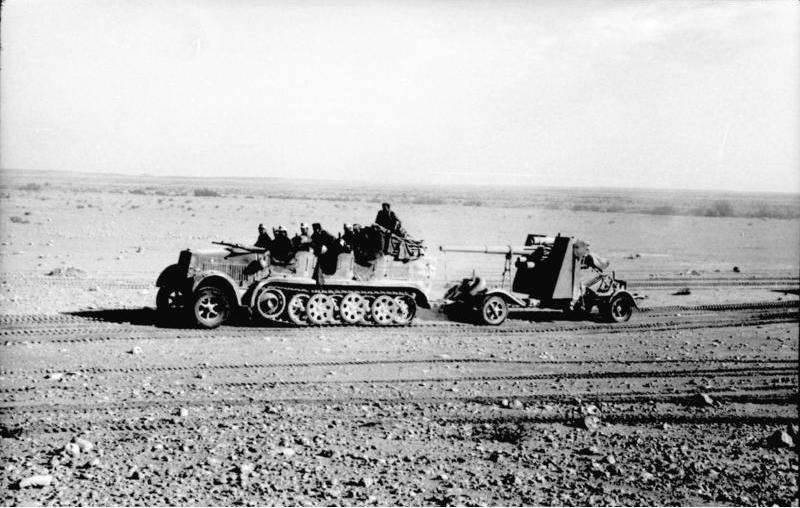
In 1939, the company Rheinmetall-Borsig received a contract to develop a new anti-aircraft gun, which would have the best ballistic characteristics. Initially, the new gun was called Gerät 37 (37 device), but in 1941 the name was changed to 8,8 cm FlaK 41, then the first prototype of the gun was ready. The first serial guns (44 units) were sent in August 1942 to the African Corps, half of which were sunk by the Allies in the Mediterranean along with the transports carrying them. And the tests of the remaining samples allowed us to identify a number of complex design flaws of anti-aircraft guns. Only with 1943, these guns began to enter the Reich air defense system.
The 8,8 cm FlaK41 cannon was notable for its increased rate of fire - 22-25 shots per minute, and the initial velocity of the fragmentation projectile reached 1000 m / s. The anti-aircraft gun had a hinge-type carriage with four cross-shaped beds. The design of the gun carriage made it possible to fire at an angle of elevation up to 90 degrees. In the horizontal plane it was possible to conduct circular fire. To protect the calculation of the gun from bullets and shrapnel there was an armored shield. Zenitka received a new barrel length 74 caliber. Originally it consisted of a casing, a pipe and a breech. The automatic shutter of the gun was equipped with a hydropneumatic rammer, which made it possible to facilitate the work of the calculation and increase the rate of fire. For Flak 41 anti-aircraft guns, a new projectile was created, the powder charge in it was increased to 5,5 kg (for Flak 18 - 2,9 kg). For this, the liner had to increase the length (from 570-mm to 855 mm) and diameter (from 112,2 to 123,2 mm along the flange).
In total, five main types of shells were developed — two high-explosive fragmentation projectiles with different types of fuses and three armor-piercing shells. The height of the new weapon reach: the ballistic ceiling was 15000 meters, the height of the real fire - 10500 meters. An armor-piercing projectile weighing 10 kg with an initial speed of 980 m / s at a distance of 100 meters pierced armor up to 194 mm thick, at a distance of one kilometer - 159 mm. A smaller mass sub-caliber projectile (7,5 kg) with an initial flight speed of 1125 m / s at a distance of 100 meters pierced armor with a thickness of 237 mm, and from a distance of 1000 meters - 192 mm.
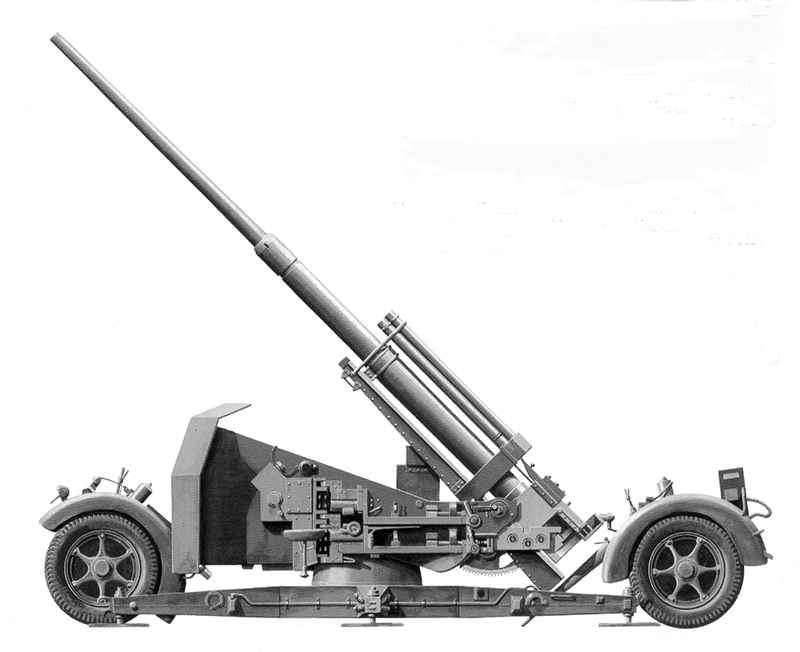
Unlike 8,8 anti-aircraft guns, the FlaK18 / 36 / 37 anti-aircraft guns using two single-axle trucks did not provide a tool for proper maneuverability during transportation, for this reason, the gun was mounted on the chassis of the Panther medium tank, but this self-propelled anti-aircraft gun and has not been developed. The 8,8 cm FlaK 41 cannon were produced in very small batches before the 1945 of the year, a total of 556 of such guns was produced. For a more successful combat with tanks, the barrel's mounting design compared to FlaK18 / 36 / 37 was rotated almost 90 degrees, which made it possible to reduce the silhouette of the gun and the visibility on the battlefield. The best fight against tanks was also promoted by the large length of the gun barrel, which ensured a high speed of the armor-piercing projectile.
By the start of World War II, by September 1, the 1939 of the Luftwaffe’s anti-aircraft units contained 2459 Flak 18 / 36 / 37 guns, which were in service with both the Reich air defense forces. And it was in the composition of the army air defense that they distinguished themselves to the greatest extent. Already during the military campaign in France, it turned out that German 37-mm anti-tank guns were absolutely helpless against the armor of most of the French tanks. However, the 88-mm anti-aircraft guns that remained “unemployed” (air supremacy captured the Luftwaffe) easily finished with them. Even more anti-tank value "Eight-eight" acquired during the battles in North Africa and on the Eastern Front.
It was a strange thing, but on the one hand, the German anti-aircraft guns didn’t have absolutely outstanding fighting qualities. For example, the Soviet 85-mm anti-aircraft gun 52K was almost as good as its German counterpart, including in armor penetration, but it never became so famous. What was the matter, why did the German “Eight-eight” deserve such fame not only in the Wehrmacht, but also in the armies of the countries of the anti-Hitler coalition members? The reason for the popularity of this tool lies in the extraordinary tactics of its use.
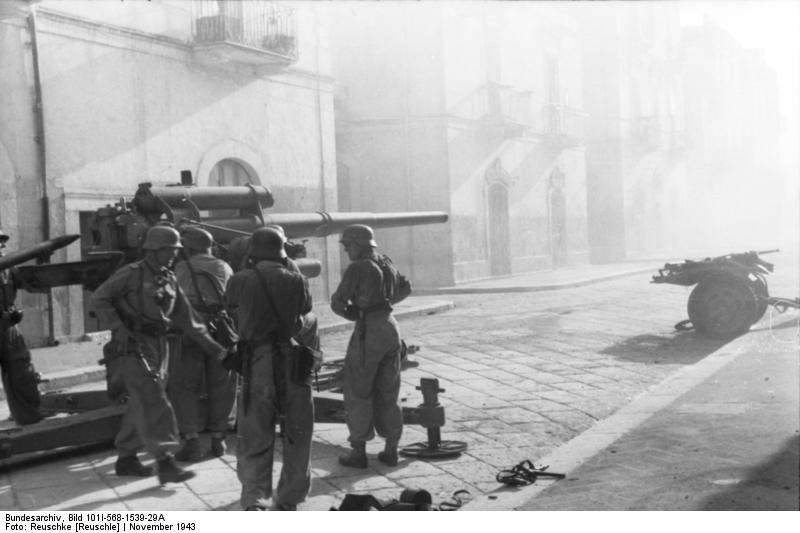
While the British themselves limited the role of their powerful 3,7-inch anti-aircraft guns to combat aircraft during the fighting in North Africa, the Germans successfully used their 88-mm anti-aircraft guns to deal with aircraft and enemy tanks. In November, the 1941 of the year in all of Rommel's African corps there were only 35 guns of 88-mm caliber, however, moving along with the tanks, these guns simply caused huge losses to the English Valentine and Matilda. On the Eastern Front, 88-mm anti-aircraft guns were also located in the battle formations of tank units. When German tankers came up against new Soviet tanks KB and T-34, very often anti-aircraft guns entered the scene. This tactic was used by the Germans until the end of the Second World War.
It is worth noting that prior to the direct use of anti-aircraft guns to fight tanks, the British generals treated this with great skepticism. They could not predict the next step of Rommel, who began to use the "Eight-eight" and in the offensive. Before the attack, the Germans secretly pushed these guns to the front line of the defense and, during a tank attack, supported their vehicles with fire. In this case, the British tanks were destroyed from a distance that was unattainable for them, and seeing the advancing German tanks in front of them, they sometimes believed that their cars were driven by them. It seemed to the British that their tanks were much inferior to German, they lost faith in the power of their own weapons. So the effect of the use of 88-mm anti-aircraft guns by the Germans was also psychological. Also important was the fact that all 88-mm anti-aircraft gun batteries were motorized, that is, they could quickly turn around in new positions. In addition, the ability to fire directly from trucks, increased the mobility of these guns.
Naturally, as the units of the Wehrmacht were saturated with new anti-tank guns, the value of 88-mm anti-aircraft guns as an anti-tank weapon gradually decreased. Despite this, by the 1944, the 13 anti-tank artillery units of the Nazi army were equipped with just such anti-aircraft guns. As of August 1944, the troops still counted 10930 Flak18 / 36 / 37 guns, which were widely used on all fronts of the war, as well as in the Reich air defense system. 88-mm cannon was widely used in coastal artillery.
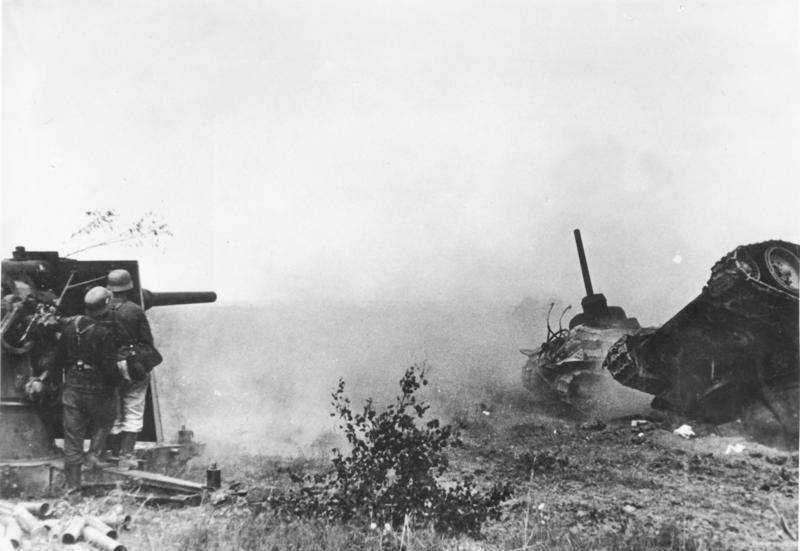
Information sources:
http://pvo.guns.ru/other/germany/flak88
http://toparmy.ru/armii-istorii/nemeckaya-armiya/vermaxt/88-mm-nemeckaya-zenitnaya-pushka-uzhasnaya-vosemdesyat-vosmaya-foto.html
http://warspot.ru/3531-vosem-vosem-panatseya-vermahta
http://zonwar.ru/artileru/tj_zenit_art/Flak41_88mm.html
Materials from open sources.
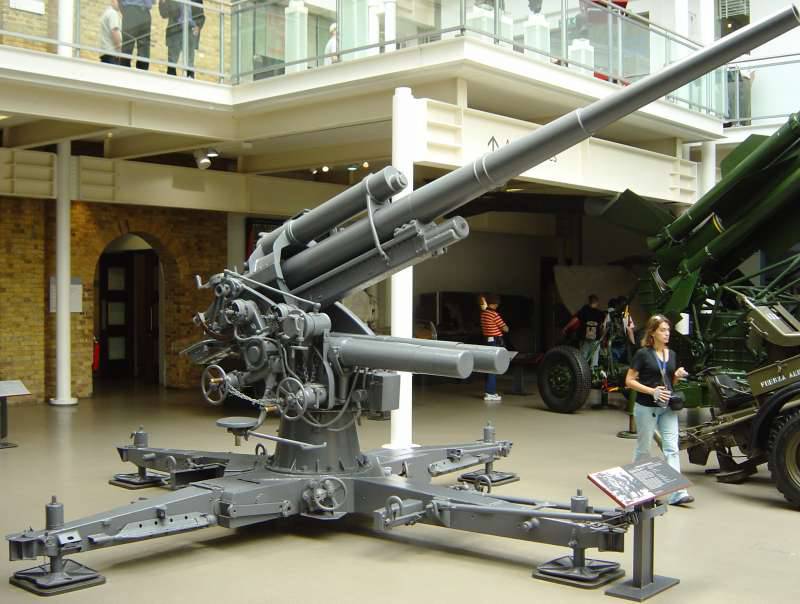
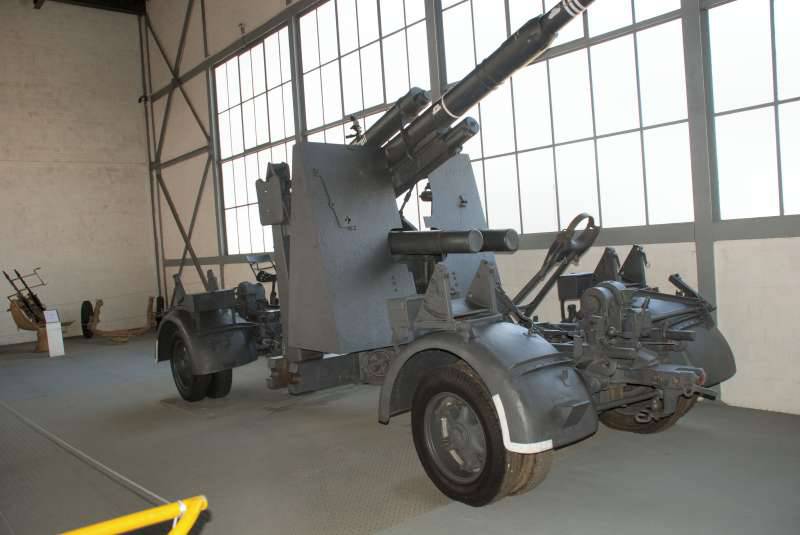

Information